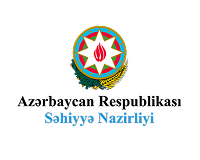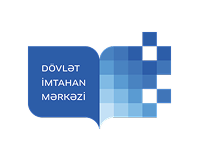THEMATIC PLAN OF LECTURES FOR STUDENTS OF THE FACULTY OF GENERAL MEDICINE ON THE SUBJECT
«CHILDREN'S DISEASES»
IV COURSE (VIII SEMESTER)
|
№ |
Topics |
Hours |
|
1. |
History of Pediatrics. The main directions of development of pediatrics. Organization of medical care for the children's population of the Azerbaijan Republic. Features of pediatric pathology. The importance of hereditary factors in the development of pediatric pathology. |
2 |
|
2. |
Problems of modern neonatology. Perinatal pathologies. Characteristics of full-term and premature newborns. Border (transient) states. Pathology of the neonatal period. Birth trauma. Diseases of the skin and navel. Sepsis. Intrauterine infections (toxoplasmosis, rubella, herpes, cytomegaly). |
2 |
|
3. |
Pneumonia in infant. The role of acute respiratory infections in the development of pneumonia. Features of the course of pneumonia in full-term and premature newborns depending on the anatomical and physiological characteristics of the respiratory tract, differential diagnosis. Treatment, prevention. |
2 |
|
4. |
Acute digestive disorders in children. Diarrhea. Etiology, pathogenesis, clinic. Intestinal toxicosis syndrome, treatment, prevention. Principles of rehydration therapy. |
2 |
|
5. |
Chronic malnutrition (dystrophies). Etiology, pathogenesis, classification, clinical picture, treatment, prevention. Rickets. Prevalence and role in pediatric pathology. Etiology, pathogenesis, clinical picture, treatment and prevention. |
2 |
|
Summury |
10 |
|
THEMATIC PLAN FOR PRACTICAL LESSONS IN THE SUBJECT
«CHILDREN'S DISEASES» FOR STUDENTS OF THE FACULTY OF GENERAL MEDICINE
IV COURSE (VIII SEMESTER)
|
№ |
Topics |
Hours |
|
1. |
Features of the neonatal period. Border (transient) states. Characteristics of full-term and premature newborns. Organization of care for newborns. Intrauterine growth retardation of newborns. |
4 |
|
2. |
Perinatal pathology of the central nervous system. Clinical picture, diagnosis and differential diagnosis, treatment (in the acute and recovery period). Prevention, prognosis. Principles of dispensary observation. |
4 |
|
3. |
Purulent-inflammatory diseases of newborns. Diseases of the skin and navel. |
4 |
|
4. |
Intrauterine infections. Toxoplasmosis, listeriosis, cytomegaly, rubella, herpes. Etiology, pathogenesis, clinical picture, diagnosis and treatment. |
4 |
|
5. |
Sepsis in newborns. Etiology, pathogenesis. Clinical forms, diagnostics. Treatment and principles of prevention. |
4 |
|
6. |
Neonatal jaundice, classification. Conjugative jaundice. |
4 |
|
7. |
Hemolytic jaundice. Hemolytic disease of the newborns. |
4 |
|
8. |
Features of the course of pneumonia in newborns. Diagnostics and treatment principles. |
2 |
|
9. |
Anemia of newborns. Classification, clinic, diagnosis and treatment. |
4 |
|
10. |
Acute respiratory infections. Etiology, clinic, diagnosis, treatment and prevention. Croup, emergency care. |
4 |
|
11. |
Features of the course of pneumonia in infant. Treatment and prevention. |
2 |
|
12. |
Anemia in young children. Deficiency anemia. Etiology, clinical picture, laboratory diagnostics. Differential diagnosis. Treatment and prevention. |
4 |
|
13. |
Diseases of the digestive system in young children. Semiotics of diseases of the oral cavity. Alimentary diarrhea. Intestinal toxicosis. Etiology, diagnosis, treatment principles. |
4 |
|
14. |
Chronic malnutrition (dystrophy). Hypotrophy of I, II, III degree, hypostatura, paratrophy, kwashiorkor, marasmus. Etiology, pathogenesis, prevention. |
4 |
|
15. |
Hypo- and avitaminosis. Hypervitaminosis. |
4 |
|
16. |
Rickets. Etiopathogenesis, clinical, biochemical, radiological changes. Diagnostics, treatment and prevention. Rickets-like diseases. |
4 |
|
17. |
Spasmophilia. Clinical forms and symptoms. Treatment. D hypervitaminosis. Treatment. |
2 |
|
18. |
Children who get sick often. Classification, etiology, clinic, treatment
|
3 |
|
Summury |
65 |
|


 English
English Русский
Русский




